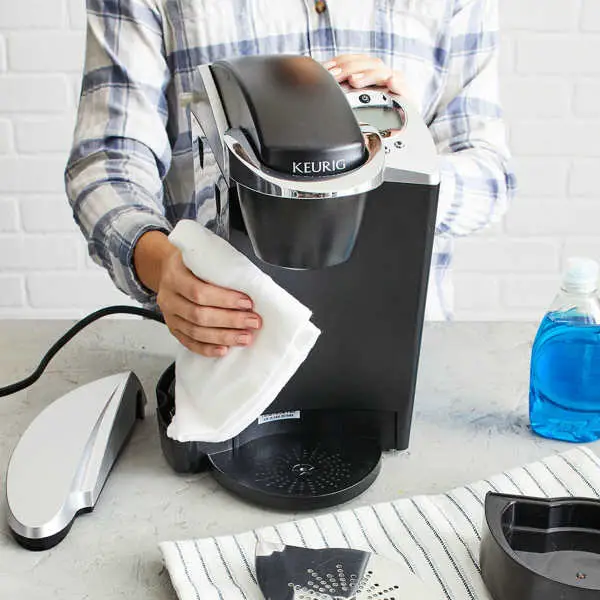
Brewing your own cup of coffee from the comfort of your home is truly a blessing.
However, just like any other appliance, coffee makers need to be cleaned regularly.
The taste of your coffee can worsen over time and the brewing can take much more time if your device is unclean or full of deposits.
Moreover, according to a study conducted by NFS International, over 50% of coffee makers around the world contain bacteria and mold, posing a threat to the wellbeing of their users.
What’s even more disturbing is that the level of dirt and bacteria has been found to be higher than bathrooms and toilets.
That’s why cleaning on a regular basis is a must.
Why Not Vinegar?
Vinegar comes with a series of drawbacks when used to clean your coffee machine regularly.
Despite being considered the ultimate cleaning product, vinegar produces an extremely powerful odor that may prevent you from enjoying the rich taste of coffee.

To remove this odor, you might need to use a lot of water and multiple rinsing sessions which takes a lot of time and effort.
Additionally, vinegar is not that effective at removing grease. While it kills bacteria, you need to perform multiple cycles in order to remove grease and oils.
The great news is that there are many other alternatives to vinegar that can be found lying around the house. You can now clean your coffee maker without vinegar using everyday items and solutions.
Below is a list of 7 different ways you can use today to clean your coffee maker with ease.
How To Clean A Coffee Maker Without Vinegar
1. Baking Soda

This natural, pure cleaning remedy is a great grease and dirt removal agent that is non-toxic and does an amazing job cleaning your coffee maker.
- Fill the coffee pot with 1 cup of lukewarm water
- Add a ¼ cup of baking soda
- Stir
- Run a brew cycle
- Remove the dirty water
- Fill the pot with fresh lukewarm water
- Run another cycle
If the water that comes back is clean, you are good to go. If it’s not 100% clean, you need to repeat this step up to 3 times.
2. Lemon
This cleaning agent offers a similar level of acidity as vinegar, but it doesn’t leave behind that notorious vinegary smell.
To clean your machine, you can either squeeze the lemon by hand or use lemon juice.
The way to clean your machine is similar to the baking soda:
- Run a cycle with just water
- Add half a cup of lemon juice to lukewarm water
- Run another cycle
- To remove the lemon residue, run another one or two cycles with just water
- Alternatively, you can brew coffee straight away and make an espresso romano. Perfect if you have a headache.
- Lastly, dab a sponge in lemon juice & water solution and wash the coffee carafe
- Additionally, wash all detachable parts with soap and water
3. Cream Of Tartar
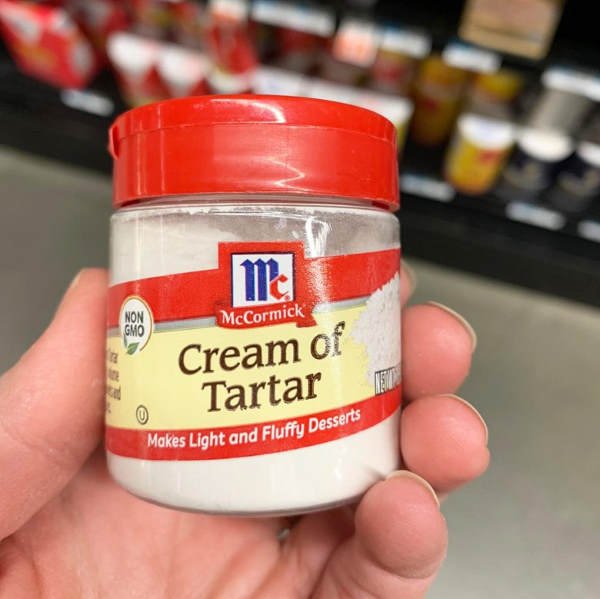
You can also clean your coffee maker naturally using the cream of tartar.
Thanks to acids containing, you can enjoy a high level of cleanliness, similar to vinegar.
- Fill your coffee pot with water
- Add 3 tablespoons of cream of tartar
- Stir the solution until totally dissolved in water
- Run 1 cycle
- Run another one with just water
4. CLR
Sometimes lemon or other solutions might not be able to completely descale your coffee machine.
In this instance, you want to use a CLR solution comprised of calcium, lime, and rust removal agents.
You can get CLR online with ease for about 10 bucks.
- Run a full cycle with just water in order to remove the residue from previous brewings
- Fill the tank with 85% water and 15% CLR
- Complete a cycle
- Do 2 more ones with just water until you don’t smell any CLR
5. Hydrogen Peroxide
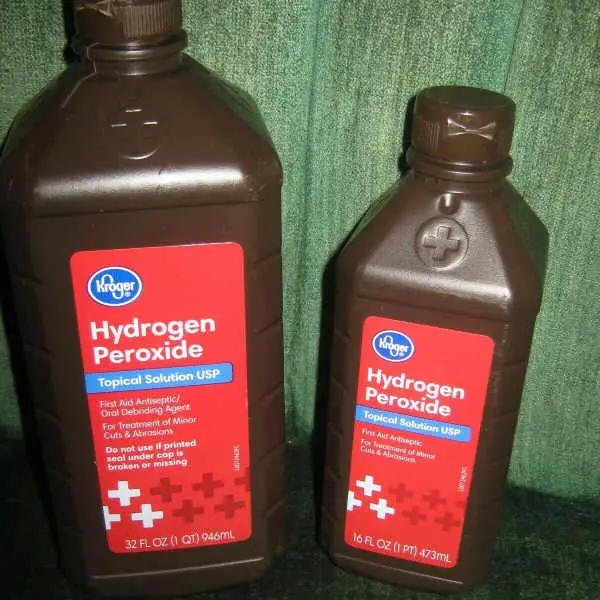
Also known as H2O2, this extremely cheap cleaner allows you to easily clean and disinfect your coffee maker in just 3 simple steps:
- Pour 1 cup of solution into the coffee carafe
- Add water to the brim
- Run a full cycle
Do not forget to run as many cycles as necessary with just water in order to remove any odor or trace of hydrogen peroxide. It’s dangerous if you ingest it, you know.
6. Denture Tablets
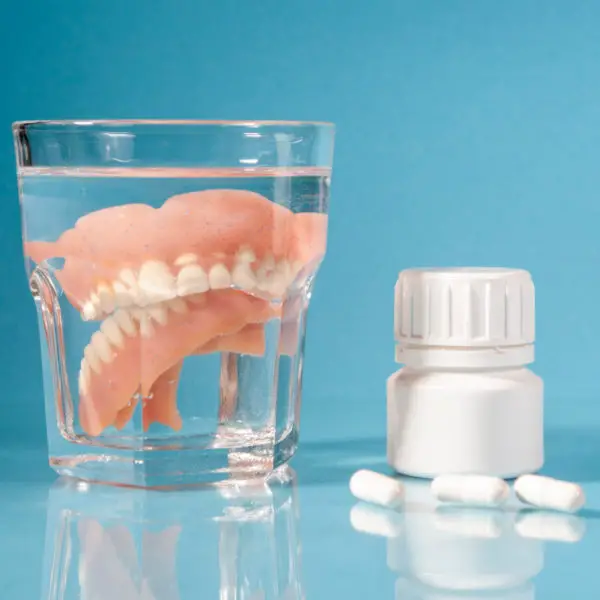
Denture cleaning tablets can kill all bacteria and remove those stubborn mineral deposits.
You can buy them in most supermarkets.
To clean your machine:
- Add 2 tablets to the container
- Fill it with lukewarm water.
- Wait until the tablets are dissolved in the water
- Run a complete cycle.
- Run 2-3 extra cycles just with water to ensure there is no residue left
7. Vodka

This is definitely one of the most intriguing alternatives to using vinegar to clean your coffee machine.
However, you need to understand that vodka has no smell and no taste whatsoever, which means you won’t need to waste precious time running multiple cleaning cycles at the end.
- Mix 25% of alcohol with 75% water
- Add the solution to the container
- Run a complete cycle
and you’re good to go. You could also run one cycle with clean water to ensure everything is fine.
You can also use vodka to wipe the insides of your coffee maker to remove any germs.
Say Goodbye To That Vinegar Smell
Coffee machines get mold, bacteria, and scale over time. The last thing you want to get is getting sick over your morning cup.
Try all of 7 cleaning tips, one at a time, to determine which one works better for you.
📌 Pin Me for Later Reading! 📌
Save this pin to Coffee Machine Cleaning or Tips For Better-tasting Coffee on Pinterest.

Did you ever clean your coffee maker with vodka before reading my article?

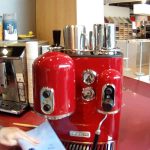
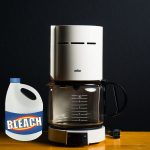

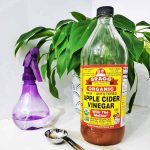
When I plug my keurig in, it won’t light up or work.
A very common reason for this is a blown fuse. To check the fuses, flip the unit over and remove the bottom cover to expose the heating assembly and parts. You can use a multi-meter, set to continuity to check the fuses. If the fuses have no continuity they should be replaced.
If the fuses are okay, check for other culprits.
Also, see this troubleshooting guide for more information (although it says KitchenAid, the tips here work on all brands).